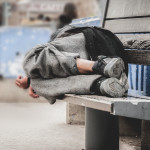If you believed the headlines in February, the feds had an epiphany about AIDS. Covering the eighth-annual Conference on Retroviruses and Opportunistic Infections in Chicago (see "Conference Call“), journalists from coast to coast reported a ”philosophical shift“ that had AIDS researchers ”reversing course“ and ”admitting that current drugs cannot ever cure HIV." But while virologists fine-tuned their defensive sound bites, in-the-trenches physicians asked what took so long.
The big news? A Department of Health and Human Services (HHS) panel issued a call to delay starting combination anti-HIV therapy. With the promise of eradication all but dead, the potential perils of early intervention now clearly outweigh the lack of proven drug benefits. For one thing, the longer someone remains on combo therapy, the greater the likelihood of side effects, ranging from lipodystrophy to diabetes. For another, early treatment means more time for drug-resistant viral strains to evolve, thereby diminishing drug efficacy. “The change was to get medical practice consistent with scientific data,” explains Project Inform’s Martin Delaney, who serves on the panel. But New York City’s Howard Grossman, MD, who has long advocated a conservative approach, says, “We’ve known this for years.”
In practical terms, the revised recommendations advise physicians to hold off on HAART until a patient’s CD4 count falls below 350, instead of the 1996 standard, 500. The panel also urges to delay treatment until viral load levels rise above 55,000 (instead of 20,000), measured by the more commonly used RT-PCR test, or 30,000 copies per ml (instead of 10,000) on the bDNA test.
“Hit early, hit hard” was the mantra until just about yesterday, coined in 1996, the same year that Time anointed David Ho, MD, its “Man of the Year” for coming “tantalizingly close to eliminating the virus” with protease inhibitors. Without a single large-scale trial to cite, that hype was effectively translated into policy by the same HHS panel. Some physicians, such as New York City’s Joseph Sonnabend, MD, blasted the guidelines as early as 1997, arguing that the panel had dropped clinical studies as the key to guiding treatment.
Ho, for his part, hasn’t shied from his evangelism in light of the new guidelines, but is redoubling his eradication efforts. “While the winds of therapy are now blowing in the direction of treating later,” Ho said at the February conference, “it is doubly important to continue studies to assess the impact of appreciably more potent regimens.” Ho showed data from a 14-day study of 22 HIVers taking a five-drug combo of lopinavir/ritonavir, tenofovir, 3TC and efavirenz, noting that their viral load declined nearly twice as fast as the control group, who took four drugs. But there was no data about the long-term side effects.
When clinical trials testing the efficacy of early treatment were conducted, the findings were, at best, inconclusive, if not downright critical of the former guidelines. The trial results also contradicted the media’s prevailing man-conquers-disease narrative and were therefore largely ignored by mainstream journalists. “AIDS reporters were skeptical all along,” says Jon Cohen, a veteran Science correspondent, “but you could always rely on the mainstream press to oversimplify.”
The new guidelines align the U.S. closer with the more conservative recommendations of countries like Great Britain, whose British HIV Association has recommended delayed treatment (CD4s below 350) for two years. As for the new improved media mantra, it’s “hit hard, hit wisely.”
For the complete HHS guidelines, click on www.hivatis.org.






Comments
Comments